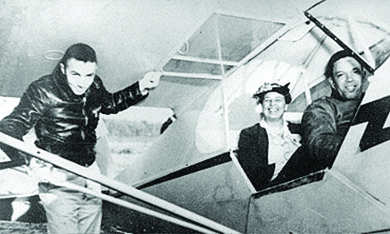| << Chapter < Page | Chapter >> Page > |
Approximately 2.5 million African Americans registered for the draft, and 1 million of them subsequently served. Initially, African American soldiers, who served in segregated units, had been used as support troops and not been sent into combat. By the end of the war, however, manpower needs resulted in African American recruits serving in the infantry and flying planes. The Tuskegee Institute in Alabama had instituted a civilian pilot training program for aspiring African American pilots. When the war began, the Department of War absorbed the program and adapted it to train combat pilots. First Lady Eleanor Roosevelt demonstrated both her commitment to African Americans and the war effort by visiting Tuskegee in 1941, shortly after the unit had been organized. To encourage the military to give the airmen a chance to serve in actual combat, she insisted on taking a ride in a plane flown by an African American pilot to demonstrate the Tuskegee Airmen’s skill ( [link] ). When the Tuskegee Airmen did get their opportunity to serve in combat, they did so with distinction.

In addition, forty-four thousand Native Americans served in all theaters of the war. In some of the Pacific campaigns, Native Americans made distinct and unique contributions to Allied victories. Navajo marines served in communications units, exchanging information over radios using codes based on their native language, which the Japanese were unable to comprehend or to crack. They became known as code talkers and participated in the battles of Guadalcanal, Iwo Jima, Peleliu, and Tarawa. A smaller number of Comanche code talkers performed a similar function in the European theater.
While millions of Americans heeded the rallying cry for patriotism and service, there were those who, for various reasons, did not accept the call. Before the war began, American Peace Mobilization had campaigned against American involvement in the European conflict as had the noninterventionist America First organization. Both groups ended their opposition, however, at the time of the German invasion of the Soviet Union and the Japanese attack on Pearl Harbor, respectively. Nevertheless, during the war, some seventy-two thousand men registered as conscientious objectors (COs), and fifty-two thousand were granted that status. Of that fifty-two thousand, some accepted noncombat roles in the military, whereas others accepted unpaid work in civilian work camps. Many belonged to pacifist religious sects such as the Quakers or Mennonites. They were willing to serve their country, but they refused to kill. COs suffered public condemnation for disloyalty, and family members often turned against them. Strangers assaulted them. A portion of the town of Plymouth, NH, was destroyed by fire because the residents did not want to call upon the services of the COs trained as firemen at a nearby camp. Only a very small number of men evaded the draft completely.

Notification Switch
Would you like to follow the 'U.s. history' conversation and receive update notifications?